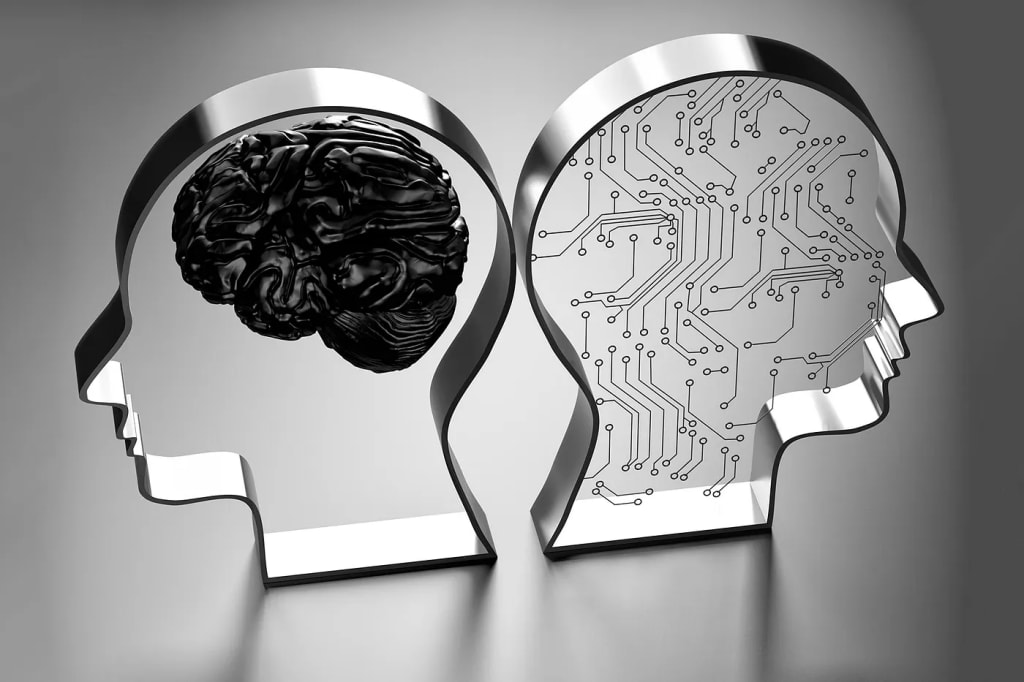
Introduction
Comparing the human brain and artificial intelligence (AI) is a fascinating exploration into the capabilities and limitations of biological and technological systems. While the human brain remains the most complex and sophisticated organ known to science, AI has made significant strides in emulating certain cognitive functions. In this article, we will examine the differences between the human brain and AI and the potential synergies that can arise from their interaction.
The Human Brain
The human brain is a marvel of evolution, comprising approximately 86 billion neurons interconnected by trillions of synapses. It is responsible for many functions, including sensory perception, motor control, emotion regulation, and higher-order cognition. Its intricate neural networks and plasticity facilitate the brain’s ability to adapt, learn, and innovate, allowing for complex behaviors and thought processes.
Key Characteristics of the Human Brain
Parallel Processing: The brain can process multiple pieces of information simultaneously, enabling efficient multitasking and complex problem-solving. This ability allows humans to engage in activities like driving while conversing or cooking while listening to music.
Creativity and Imagination: The human brain has an unparalleled capacity for creativity, allowing individuals to generate novel ideas, artistic expressions, and innovative solutions. This creativity is not limited to the arts but extends to scientific discoveries, technological inventions, and everyday problem-solving.
Emotional Intelligence: Unlike AI, which lacks emotions, the human brain integrates emotional processing into decision-making, social interactions, and self-awareness. Emotional intelligence enables empathy, social bonding, and the ability to navigate complex social situations.
Adaptability: Through neuroplasticity, the brain can reorganize its structure and function in response to learning, experience, and environmental changes, enabling lifelong growth and development. This adaptability is crucial for recovery from injuries, learning new skills, and adjusting to new environments.
Artificial Intelligence (AI)
AI refers to computer systems that can perform tasks that typically require human intelligence, such as learning, reasoning, problem-solving, perception, and natural language understanding. While AI lacks the biological complexity of the human brain, it excels in certain domains, particularly those involving large-scale data analysis, pattern recognition, and repetitive tasks.
Key Characteristics of AI
Machine Learning: AI algorithms can analyze vast amounts of data to identify patterns, make predictions, and improve performance over time without explicit programming. This ability has revolutionized fields such as medicine, finance, and marketing.
Speed and Accuracy: AI systems can process information at incredible speeds and with a high degree of accuracy, surpassing human capabilities in tasks like complex calculations and data processing. This efficiency makes AI invaluable in industries that require rapid and precise data analysis.
Scalability: AI technologies can be scaled up or down to handle diverse tasks and datasets, making them versatile tools for various applications, from healthcare to finance to transportation. This scalability allows for the deployment of AI in both large-scale industrial settings and individual consumer products.
Lack of Consciousness: Unlike the human brain, AI lacks subjective experiences, consciousness, and self-awareness, operating solely based on algorithms and data inputs. This absence of consciousness means AI does not have personal motivations, feelings, or an understanding of its actions' broader context.
Synergies Between Human Brain and AI
While the human brain and AI possess distinct strengths and weaknesses, there is great potential for synergy when they are combined effectively. Collaborative efforts between humans and AI can leverage the complementary capabilities of both systems, leading to enhanced problem-solving, creativity, and productivity.
For example, AI can assist humans in processing and analyzing vast amounts of data, providing valuable insights and decision support. In medical diagnostics, AI can quickly analyze medical images and data, helping doctors make accurate diagnoses and treatment plans. In business, AI can analyze market trends and consumer behavior, aiding in strategic decision-making.
Conversely, human intuition, creativity, and ethical judgment can guide AI systems in navigating complex moral and social dilemmas. While AI can process data and identify patterns, it lacks the ability to understand context and make ethical decisions. Human oversight is essential to ensure AI's application aligns with societal values and ethical standards.
In the creative industries, AI can be used as a tool to augment human creativity. For instance, AI algorithms can generate music, art, and literature, which artists can then refine and build upon. This collaboration can lead to new forms of artistic expression and innovation.
In the workplace, AI can automate repetitive tasks, freeing humans to focus on more complex and creative aspects of their jobs. This can lead to increased productivity and job satisfaction, as employees can engage in more meaningful work.
Conclusion
The comparison between the human brain and AI highlights the remarkable achievements and inherent limitations of both biological and technological intelligence. While the human brain remains unmatched in its complexity, adaptability, and emotional depth, AI continues to advance in its ability to perform specialized tasks and augment human capabilities. By recognizing and embracing the synergies between human and artificial intelligence, we can unlock new opportunities for innovation, collaboration, and societal progress.
Understanding and leveraging the unique strengths of both the human brain and AI can lead to a future where technology enhances human potential rather than replacing it. This collaborative approach can drive advancements in various fields, improve quality of life, and address some of the world's most pressing challenges. As we continue to explore the relationship between human intelligence and AI, it is crucial to foster a balanced and ethical integration that benefits society as a whole.
About the Creator
Enjoyed the story? Support the Creator.
Subscribe for free to receive all their stories in your feed. You could also pledge your support or give them a one-off tip, letting them know you appreciate their work.





Comments
There are no comments for this story
Be the first to respond and start the conversation.